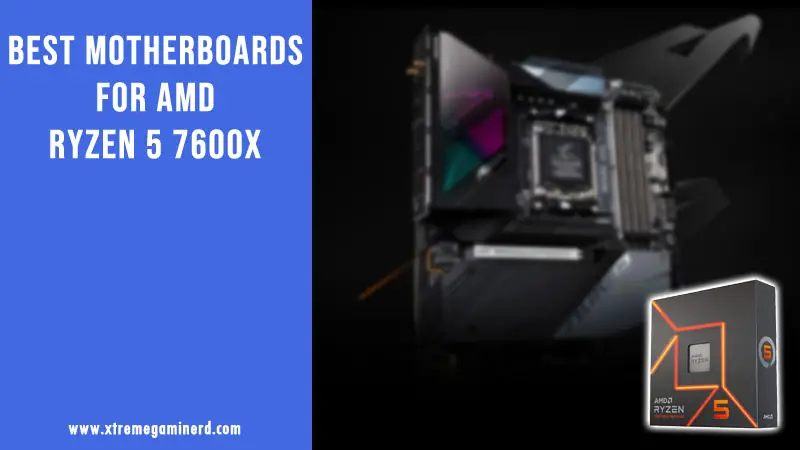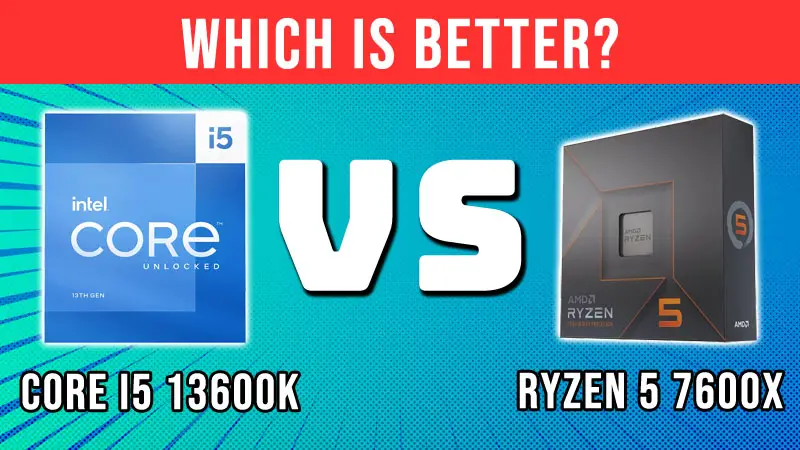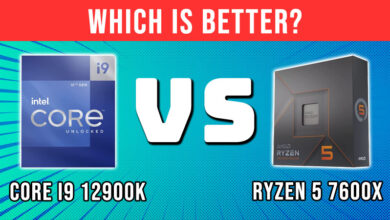After the release of the Ryzen 7000 series, you might be wondering if you should stick to the Zen 3 Ryzen 5000 processors or upgrade to a 7000 series CPU.
While every generation, AMD has significantly improved its Ryzen CPUs, the 7000 series CPUs are also much better than the Ryzen 5000 family.
However, this can’t be said about the transition from 58000X3D to the 7000 series. As Ryzen 5800X3D brings a different die design than the traditional 5000 processors, we have to look in a different way when comparing the 5800X3D with Ryzen 7000 processors.
In this article, we will look at the differences between the 7600X and 5800X3D to make it easy for you to make a choice between the two when shopping for your computer.
Specifications Difference
SPECS | AMD RYZEN 5 7600X | AMD RYZEN 7 5800X3D |
Code Name | Raphael | Vermeer |
Lithography | 5nm | 7nm |
Socket | AM5 | AM4 |
Cores/Threads | 6/12 | 8/16 |
Clock Speeds | 4.7/5.3GHz | 3.4/4.5GHz |
L2/L3 Cache | 6/32MB | 4/96MB |
TDP | 105W | 105W |
Integrated Graphics | Yes | Yes |
The Ryzen 7600X and 5800X3D have significant differences in their specs and that is mostly due to their different platforms. The 5800X3D is compatible with the AM4 socket whereas the 7600X is compatible with AM4 and both of them can’t be exchanged on these sockets.
This compatibility difference results in a lot of differences in other areas such as memory compatibility. The 7600X will only use DDR5 RAM while the 5800X3D is only compatible with DDR4.
Other specs of these CPUs such as the core/thread count, clock speed, cache memory, etc. are although different, coming from the original 5800X CPU, the 5800X3D retains the same 8 cores and 16 threads.
The clock speed of the 7600X, however, is far higher than the 5800X3D and the same goes for other Ryzen 7000 CPUs compared with their predecessors. However, the biggest difference between the two is the cache memory. Unlike the 5000 series CPUs, the 5800X3D is hugely improved with almost 3 times more L3 cache memory than the 5800X and the 7600X.
The other great difference between the two is the integrated graphics. Normally the Ryzen CPUs don’t come with an iGPU but the 7000 series is an exception. The 7600X comes with RDNA 2 based iGPU clocked at 2200MHz while the 5800X3D comes with no iGPU.
If we look for similarities, the 7600X and 5800X3D feature the same 105W default TDP and the ability to overclock on all cores.
- The world's fastest gaming desktop processor and...
- 8 Cores and 16 processing threads with AMD 3D...
- 4.5 GHz Max Boost, 100 MB cache, DDR4-3200 support
- For the advanced Socket AM4 platform, can support...
Architectural And Design Differences

There are even more differences than the theoretical specs listed above and these are present in their die design. While AMD did not create the Zen 4 completely from scratch, there are several improvements made here and there to uplift the overall performance.
The 7000 series CPUs are overall 15-20% faster than their 5000 series predecessors in the same sub-families. However, having an improved die design makes the 5800X3D a completely different case for comparison.
The real reason for the triple L3 cache memory on the 5800X3D is the 3D V-Cache technology which is literally the cache memory put vertically on top of the CPU. The 5800X3D can access all the L3 cache memory directly as the new technology triples the access to 12MB per core.

The Zen 3 and Zen 4 architecture allows the CPUs to have 8 cores in one and two CCXs respectively. The Zen 4 is, therefore, more like Zen 2 in die design but has the L3 cache is decently available for all the cores. Normally, each core would be able to access 4MB of L3 cache which makes a total of 32MB of cache memory that will be accessible by the processor but the 5800X3D breaks this limitation.
The 7600X doesn’t have the 3D V-cache technology and therefore, the 5800X3D is designed differently to perform well across games and applications. AMD is said to launch the 3D cache versions for the 7000 series as well but they will be costlier than the non-3D cache CPUs.
- The Socket AM5 socket allows processor to be...
- Ryzen 5 product line processor for your...
- 5 nm process technology for reliable performance...
- Hexa-core (6 Core) processor core helps processor...
Gaming And Non-Gaming Performance

The truth about the specs comes out when the processors are compared to each other in games and CPU-intensive applications. It is important to consider all the factors when comparing two processors to make sure there is a fair comparison is going on.
While using the same motherboard and RAM won’t be possible in the comparison of 7600X and 5800X3D, it is possible to keep other hardware exactly the same. Yes, different RAM and memory clock speeds will yield different results but those are insignificant compared to the performance difference we can obtain from the CPU and GPU.
For the comparison between the two processors in gaming and non-gaming performance, we need to see how third-party reviewers have organized the benchmarks and then we can analyze some of them to make a clear conclusion.
For this comparison, we are going to take benchmarks from GamersNexus((https://youtu.be/JM-twyjfYIw)), Techspot((https://www.techspot.com/review/2534-amd-ryzen-7600x/)), Tomshardware((https://www.tomshardware.com/news/amd-ryzen-9-7950x-ryzen-5-7600x-cpu-review)), and Anandtech((https://www.anandtech.com/show/17585/amd-zen-4-ryzen-9-7950x-and-ryzen-5-7600x-review-retaking-the-high-end)) and analyze the results for a final conclusion.
If we consider the performance of both the CPUs in games, irrespective of the resolutions, the 7600X and the 5800X3D are basically equivalent where sometimes the former takes the lead and vice-versa. Looks like both of them are at the top of the charts in gaming performance and I am not surprised by 5800X3D’s performance as it was the king of the gaming CPUs before the 7000 series launch.
The 7600X couldn’t take a big lead in gaming performance despite being around 20% faster than the 5600X which is essentially a member of the same 5000 series family where the 5800X3D belongs.
As for the applications, this is where things go in different directions. The 7600X shines here beating the 5800X3D overall whether marginally or significantly. While many applications see little difference between the two, the applications that are heavily single-core performance-oriented favored the 7600X much more than the 5800X3D.
Despite having fewer cores and threads, the 7600X is faster across different applications and increases the performance gap which is almost negligible in gaming performance.
The Path To Upgrade
The most confusing part for consumers can be upgrading. Going with either 7600X or the 5800X3D will have you make sacrifices in future upgrades. While the 7600X looks more promising when we compare its performance to the 5800X3D considering the large price difference between the two, the overall cost of building a PC with the 7600X is definitely much higher.
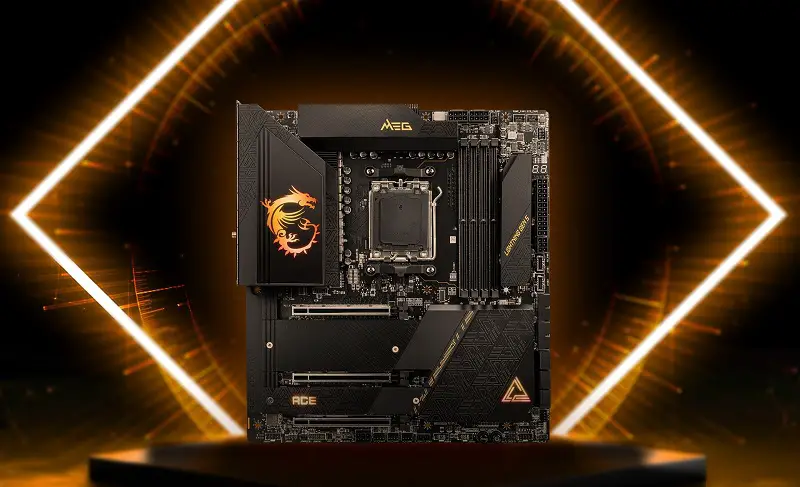
This decreases the overall value for the money spent and makes the 7600X a bad choice. The X670 and B650 motherboards are very expensive as of now and so are the prices of DDR5 RAM kits. Also, the 7600X runs way hotter than the 5800X3D reaching up to 90C and above easily even with the aftermarket coolers. This will compel users to use more expensive coolers to stop their PCs from acting like an oven.
On the other hand, the 5800X3D although has a good record in performance, there is no path for upgradeability except for upgrading to a higher-end processor in the 5000 family. This, however, will only impact the gaming performance negatively as 5800X3D is still faster than every high-end Ryzen 5000 series CPU.
The only reason why the 5800X3D looks good is that the cost of X570 and B550 motherboards are lower than the AM5 motherboards and DDR4 RAM kits are also quite cheap.
It makes more sense to upgrade from a 1st, 2nd, or 3rd generation to the 5800X3D than buying the 5800X3D as your first Ryzen CPU. However, if it does the job well and fulfills your requirements, it is definitely a cheaper and better option than going with the 7600X especially if you are going to use your PC for at least 3-5 years which most of us do.
Conclusion And Final Words
Deciding on a better CPU between the 5800X3D and 7600X is definitely harder than deciding between a 7600X and 5600X. I have listed the important points that explain the difference between the 5800X3D and 7600X in detail but the decision is yours.
Personally, I would wait for the 7600X if I had time but I would never go with it with the current prices or if the prices stay higher than going with the 5800X3D.
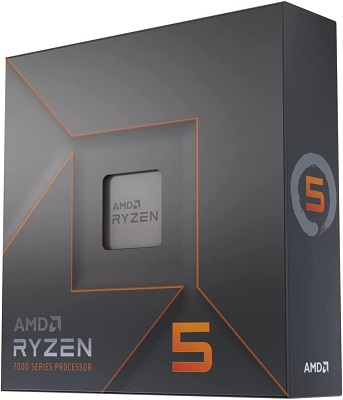
Reasons To Buy Ryzen 7 7600X
[wp-svg-icons icon=”thumbs-up” wrap=”i” color=green] AM5 will last longer
[wp-svg-icons icon=”thumbs-up” wrap=”i” color=green] RDNA 2 based iGPU
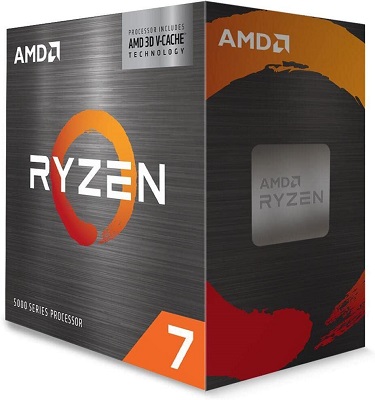
Reasons To Buy Ryzen 7 5800X3D
[wp-svg-icons icon=”thumbs-up” wrap=”i” color=green] Lower PC cost overall
[wp-svg-icons icon=”thumbs-up” wrap=”i” color=green] Supports less expensive DDR4 RAM
Related:
- AMD Ryzen 5 7600X vs Ryzen 7 7700X
- AMD Ryzen 5 7600X vs Ryzen 5 5600X
- AMD Ryzen 5 7600X vs Intel Core i5 12600K
- AMD Ryzen 7 7700X vs Ryzen 7 5700X
- AMD Ryzen 7 7700X vs Ryzen 7 5800X3D
- AMD Ryzen 7 7700X vs Intel Core i7 12700K
- AMD Ryzen 7 7700X vs Ryzen 9 7900X
- AMD Ryzen 9 7900X vs Ryzen 9 7950X
- AMD Ryzen 9 7900X vs Intel Core i9 12900K
- AMD Ryzen 5 7600X vs Intel Core i9 12900K
- AMD Ryzen 9 7900X vs Ryzen 9 5900X
- AMD Ryzen 9 7950X vs Ryzen 9 5950X




